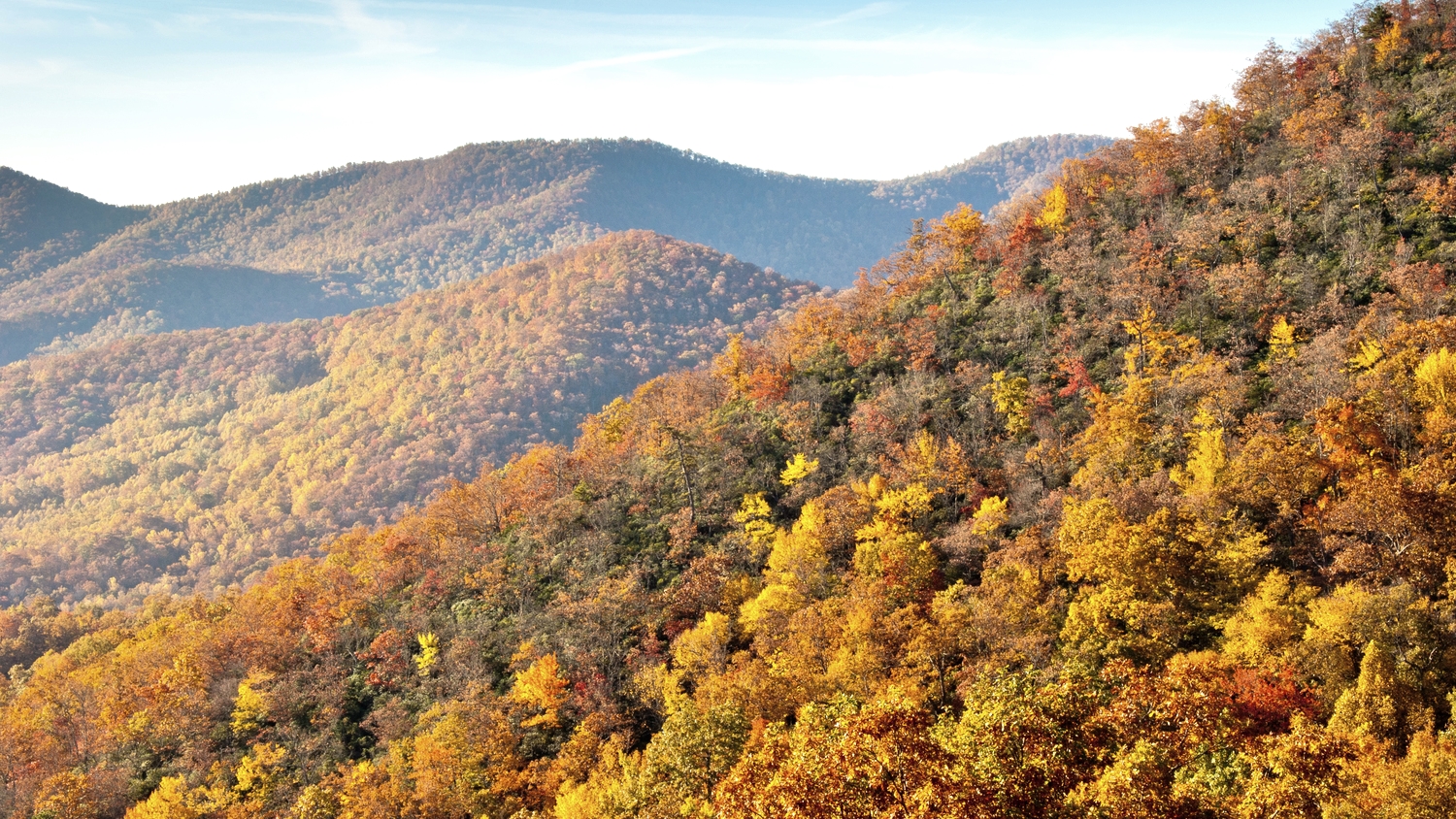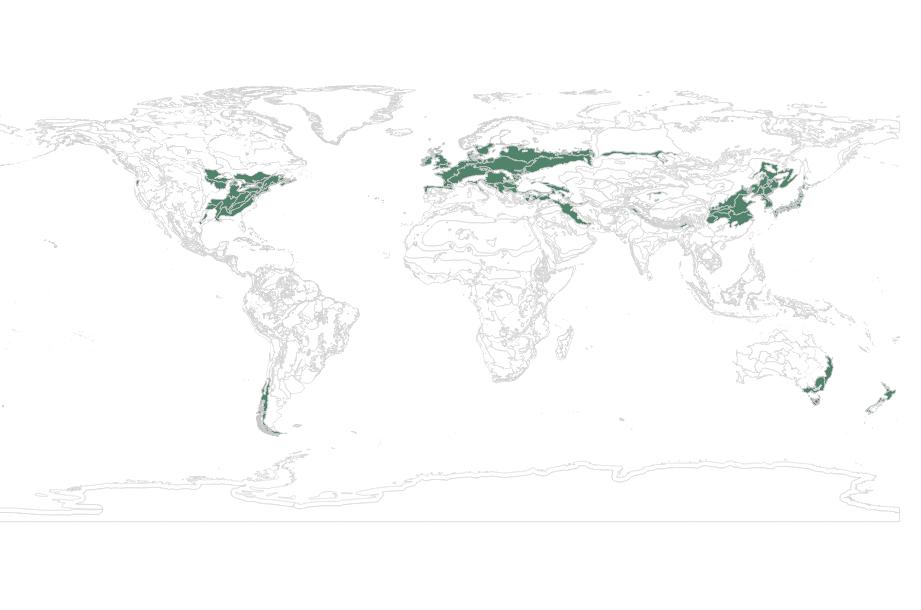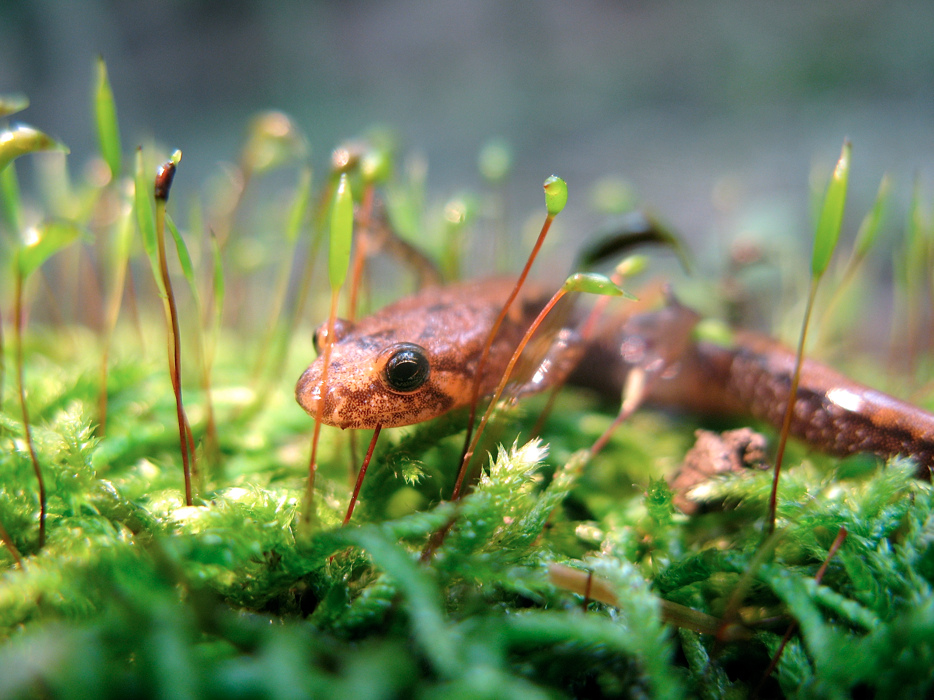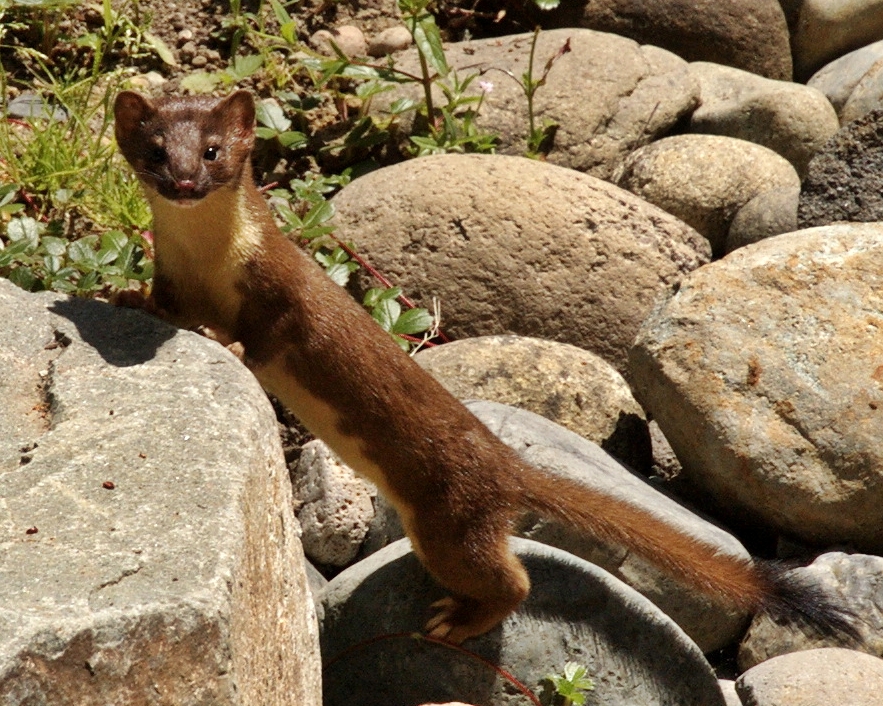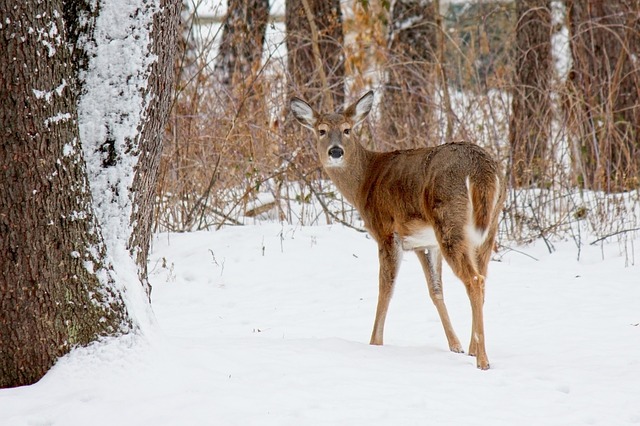TEMPERATE BROADLEAF AND MIXED FOREST
LOCATIONS
Central China, Eastern North America, Caucasus, Himalayas, Southern Europe, Russian Far East hold the richest Temperate Broadleaf and Mixed Forests ecoregions. The Temperate Broadleaf and Mixed Forests biome is composed of 85 ecoregions.
BASIC DESCRIPTION
Forests in the temperate regions experience a wide range of variability in temperature and precipitation. Rainfall is broadly distributed throughout the year. These forests often have 4 layers: canopy with dominant mature species, a second layer of mature trees, a shrub layer, and and understory layer of grasses and herbaceous. Most species diversity is concentrated in the forest floor. Most of the dominant species have widespread distributions along the globe. Nevertheless, many of the ecoregions that belong to this biome have local endemics. Invertebrates, vertebrates plant specialists, and herbaceous floras are part of the distinctive diversity and endemisms. Large carnivores require wide areas to persist. Fire disturbance is part of the biome and some species depend on it in late successional forests
REPRESENTATIVE SPECIES
The Temperate Broadleaf and Mixed Forest ecoregions are composed of a mix of deciduous trees species and evergreens, such as: Oak (Quercus spp.), Beech (Fagus spp.), Birch (Betupa spp.), and Maple (Acer spp.). Flowering dogwood (Cornus florida), sassafras (Sassafras spp.), and hop hornbeam (Carpinus spp.) often occur in the understory. Intact wetter sites feature American elm (Ulmus americana), tuliptree (Liriodendron tulipifera), and sweetgum (Liquidambar styraciflua). Western Mexico, southwestern United States ecoregion, and through the Sierra Madre Mountains is a region that hosts one of the richest Temperate Broadleaf and Mixed Forest biodiversity areas in North America. The topographic diversity promotes transition zones within the same biome combining these forests with semiarid areas where cactus and agave plants thrive. Endemic bird species include the thick-billed parrot (Rhynchopsitta pachyrhyncha) (critically endangered), tufted jay (Cyanocorax dickeyi), eared quetzal (Euptilptis neoxenus), green-striped brush finch (Atlapetes virenticeps), green parakeet (Aratinga holochlora), eared trogon (Euptilotis neoxenus), coppery-tailed trogon (Trogon elegans), Mexican jay (Aphelocomaultramarina), violet crowned hummingbird (Amazilia violiceps), spotted owl (Strix occidentalis), and golden eagle (Aguila chryaetos), among many other species.
KEY DESIGN CONSIDERATIONS
Provide habitat corridors as large carnivores require wide areas to persist and their loss has cascading impacts on forest structure and ecology
Leverage fire disturbance as some species depend on it in late successional forests (lichen, fungi and some invertebrates)
Restore habitat "patches" and minimize habitat fragmentation as some understory species are unable to cross deforested areas.
Leverage the cycle of deciduous trees

